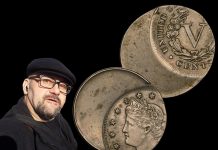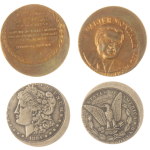
Stefan Proynov: Erroneous coins gain more and more numismatic value, and the bigger the mistakes, the higher their price. The truth is that each errant coin is unique in its own right. A unique bug is currently being offered. This is an absolutely stunning and almost certainly unique error. 1906 Indian cent struck on (presumably) 1905 5 peso (KM-464), recognizable by remaining edge inscription INDEPENDENCIA Y LIBERTAD. The stroke is decidedly uneven, with one half of each side decidedly more defined than the opposite half.
However, traces of the subtype are not visible even under close observation. There are significant wear and contact marks that hint at the coin’s subsequent life as a curious pocket piece or someone wore it as a talisman as something so unique as it would have been quickly withdrawn from circulation. Seemingly unthinkable, but absolutely original, this unique item is sure to become a legendary collector’s item in the future. This coin was discovered by a person browsing loose coins at a coin show.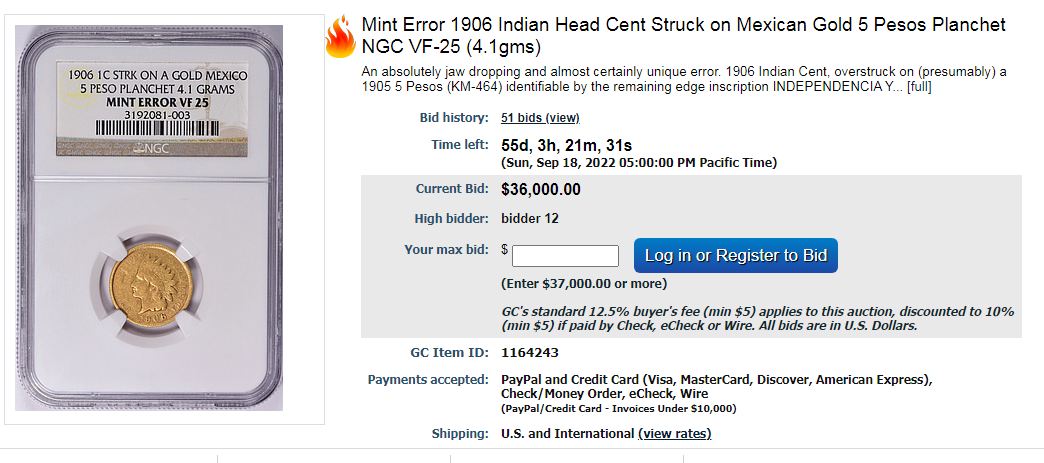
Stefan Proynov: I call such people “fault finders” as I myself have spent many sleepless nights – I am satisfied. Bidding is now live at GreatCollections.com for a potential once-in-a-lifetime opportunity to win a unique US Mint error coin. This 1906 Native American cent, certified and graded VF 25 by NGC, is not only a non-metallic error, but was also struck on a Mexican gold 5 peso coin.
Discovered while searching for large US coins at a coin show, despite the coin’s uneven strike, this coin is much more than just a curiosity, it is unique. Interested collectors should be aware that the auction for this unique error ends in two months on Sunday, September 18, 2022 at 5:00 PM Pacific Time (8:00 AM Eastern). At the time of publication, the current high bid is $41,000.00 after 49 bids. Non-metallic errors occur when a coin is struck on a planchet of a different denomination.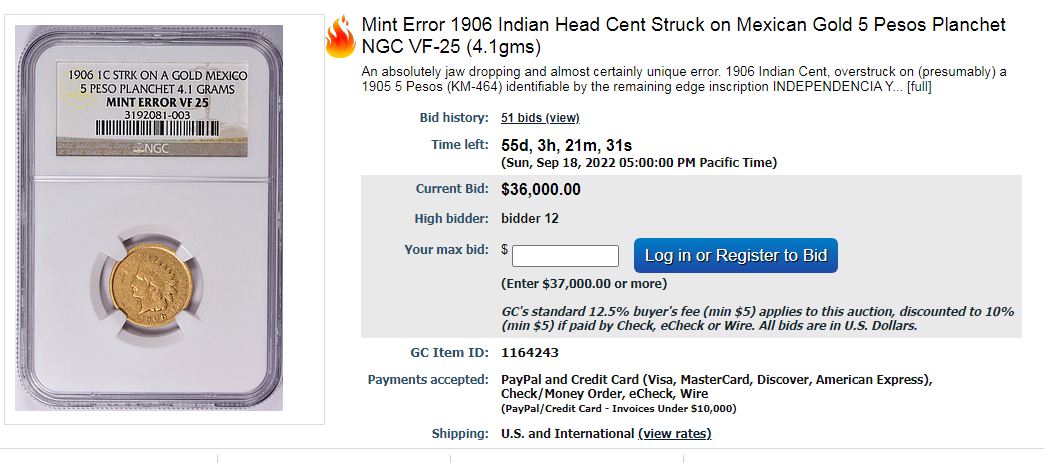
The most famous example is the 1943 copper Lincoln cent. Although these errors are now relatively rare, gold examples are nearly impossible to find due to the value of the metal used and the additional quality audits they go through by mint workers during minting. of these precious coins. In fact, since gold was worth $20.67 an ounce in 1906 ($680.53 adjusted for inflation) and since the host coin has 0.1206 ounces of gold, the United States Mint lost $2.49 ($81.98 adjusted for inflation) due to this error. This was the first year that this mistake could have been made, as not only did the US Mint begin minting coins for Mexico in 1906, but it was also the only year that they minted 5 peso coins, in during which four million units were produced. Although it has a very uneven strike, the fact that both coins measure 19mm makes the design sit perfectly above the subtype.
This coin has significant wear indicating that it was not withdrawn from circulation and passed through many hands until it was discovered at a coin show! Valuing gold non-metallic errors can be difficult due to their rarity, and since they almost never come up for auction, there are very few similar coins to compare them to. That being said, this is not the only Native American cent struck on US gold plates.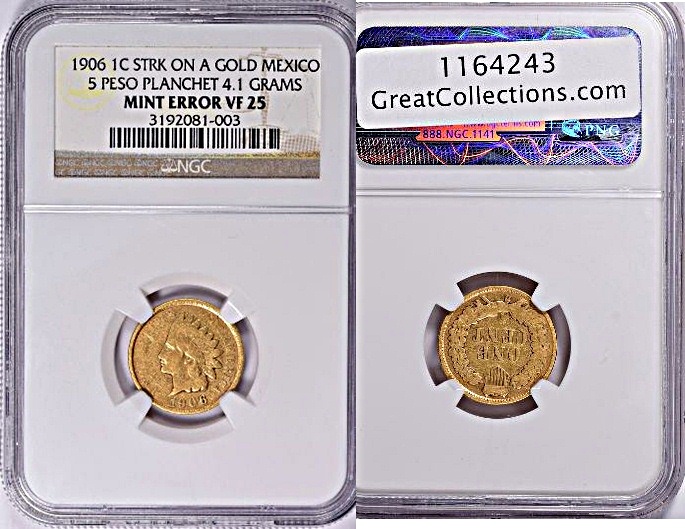
There are six other known examples: three from 1900, one from 1905, one from 1906 and one from 1907 – all of which are extremely valuable. It is highly unlikely that these were accidental errors, and numismatist and author Andrew W. Pollock III claims that they were in fact “intentionally minted for one or more collectors” ( MintErrorNews , 7). However, this particular coin is the only non-metallic Indian cent minted on a foreign gold coin! The Native American Head Cent Design and How Its Error Affects The obverse of the Native American Head Cent features a left facing bust of Miss Liberty adorned with feather decoration representative of Native American culture.
The headdress features ornate ribbons, including a large ribbon at the base of the headdress below the feathers above Liberty’s forehead, which is inscribed with the word LIBERTY. A smaller ribbon descends from the back of Miss Liberty’s neck and is decorated with a diamond pattern. Another segment of ribbon, located deeper in the lower detail of Liberty’s hair, gained greater numismatic significance in 1864 when it received the initial “L” for the Mint’s Chief Engraver, James Barton Longacre. The legend “UNITED STATES OF AMERICA” is inscribed in the field along the obverse edge, and the date 1909 is located in the lower center of the obverse just below Liberty’s neck. The reverse side of in



